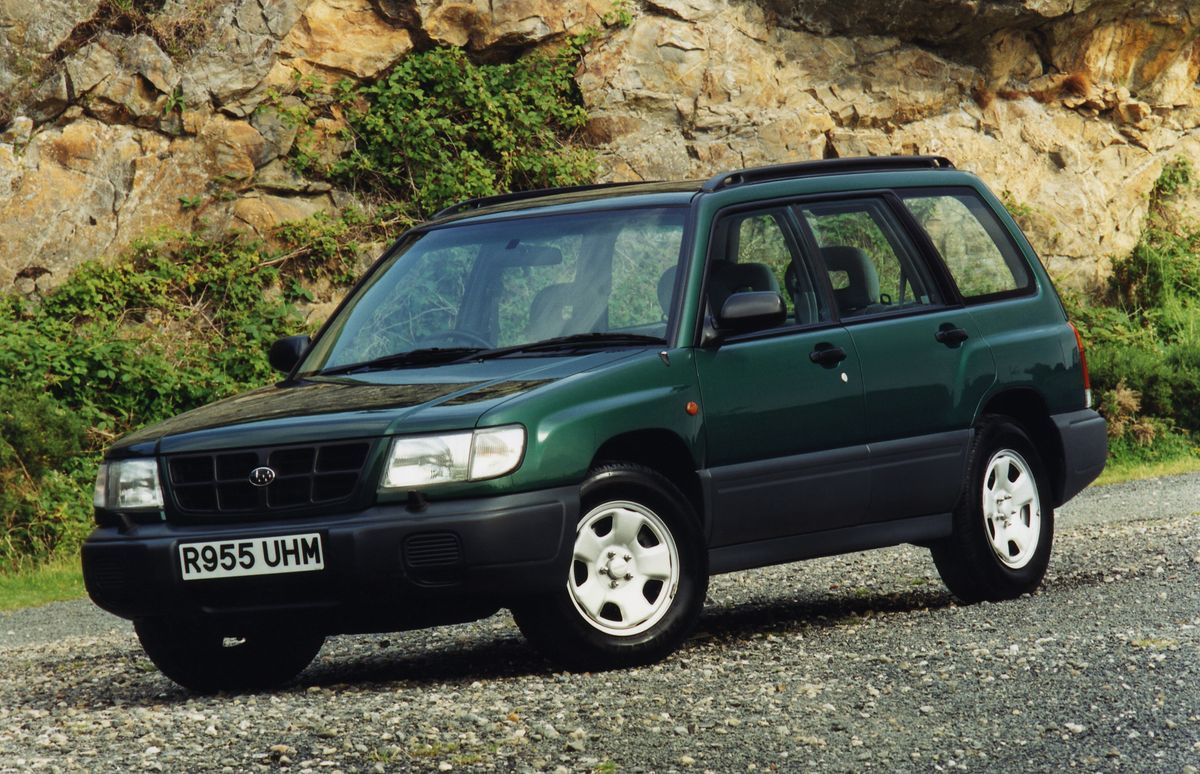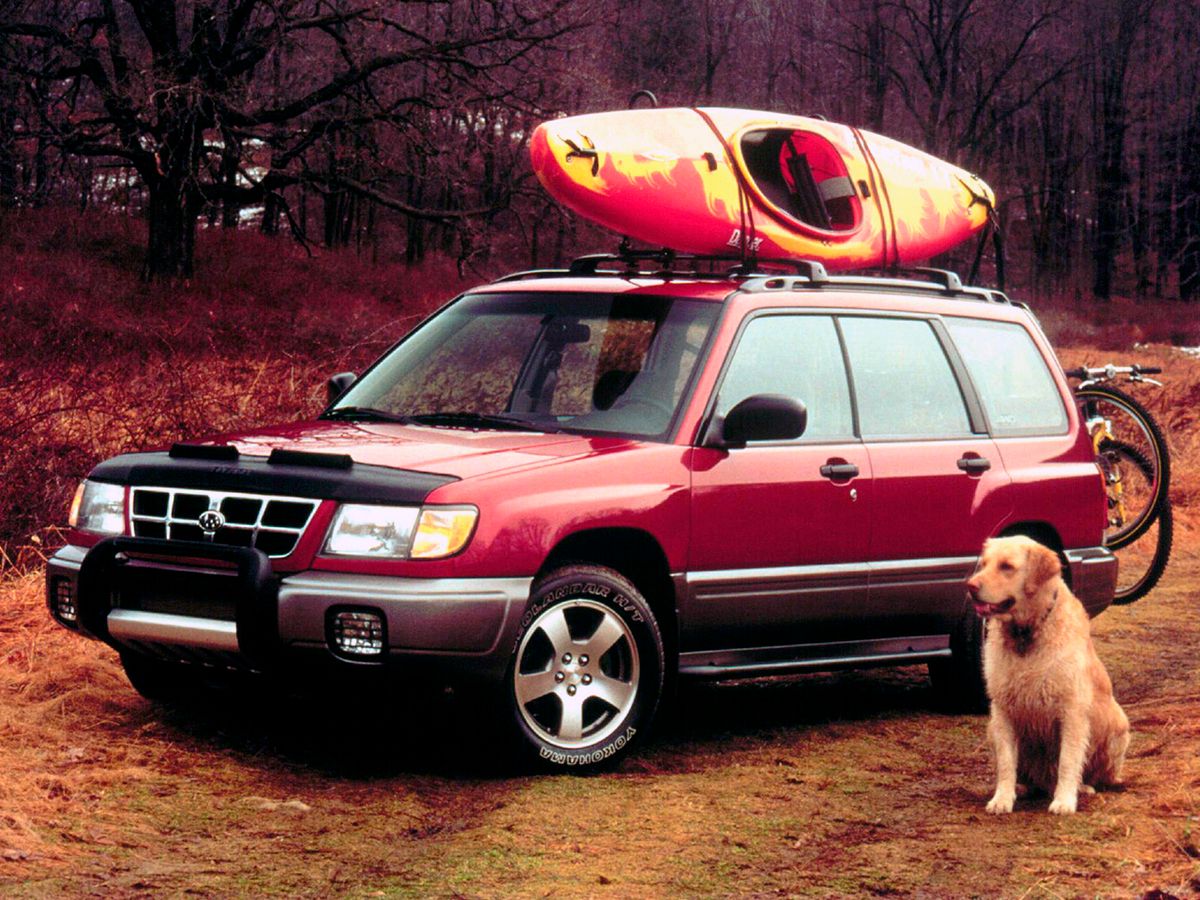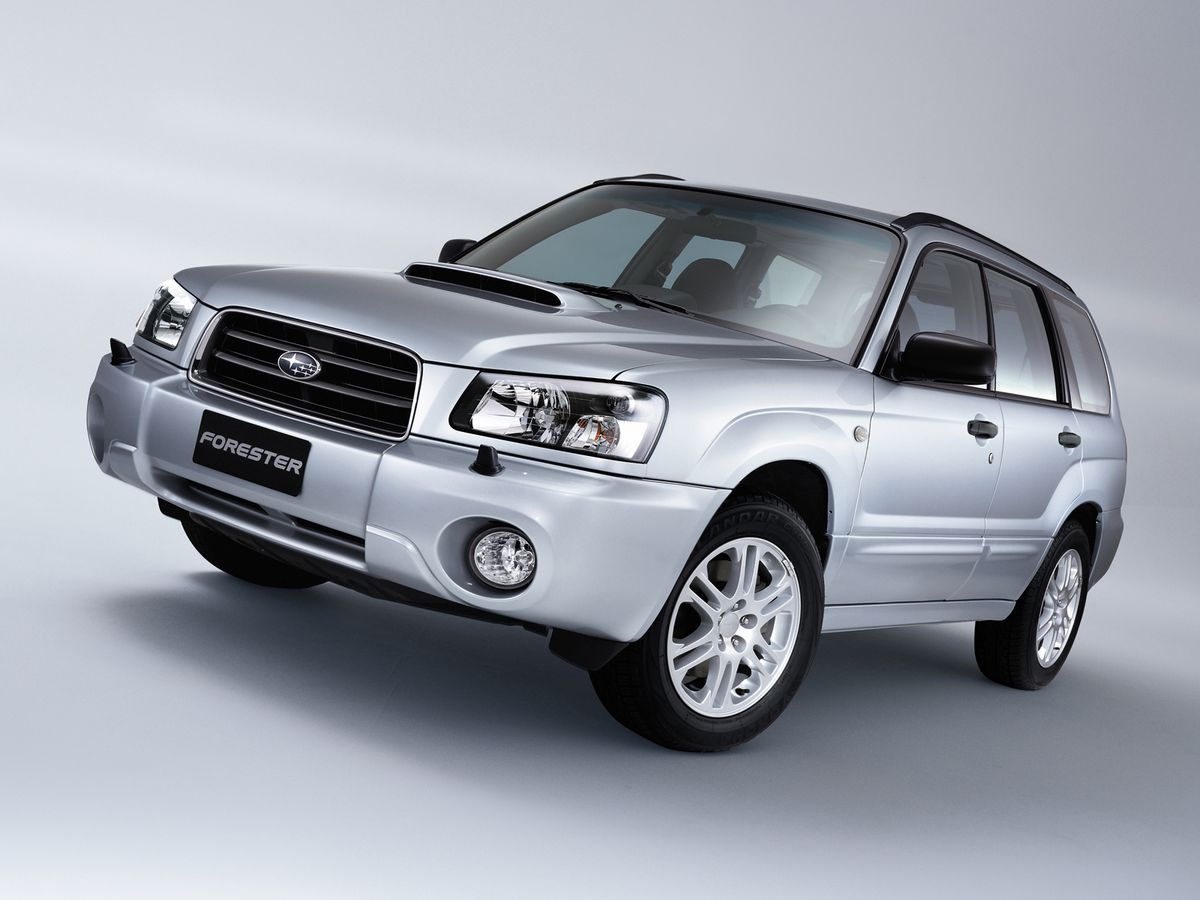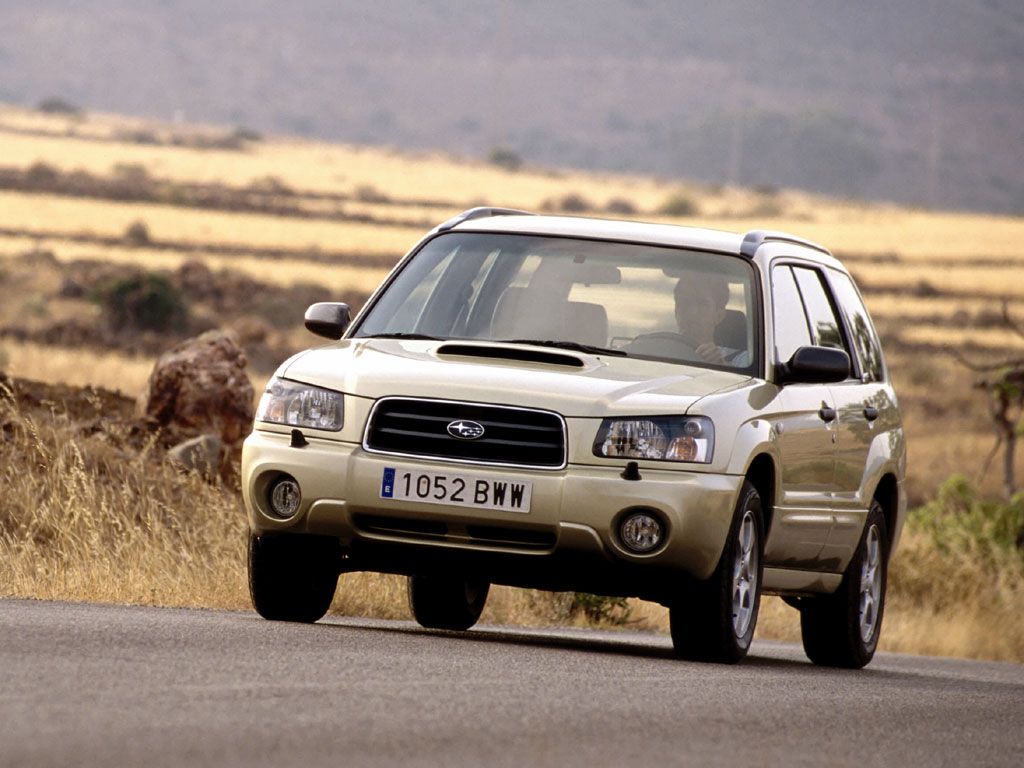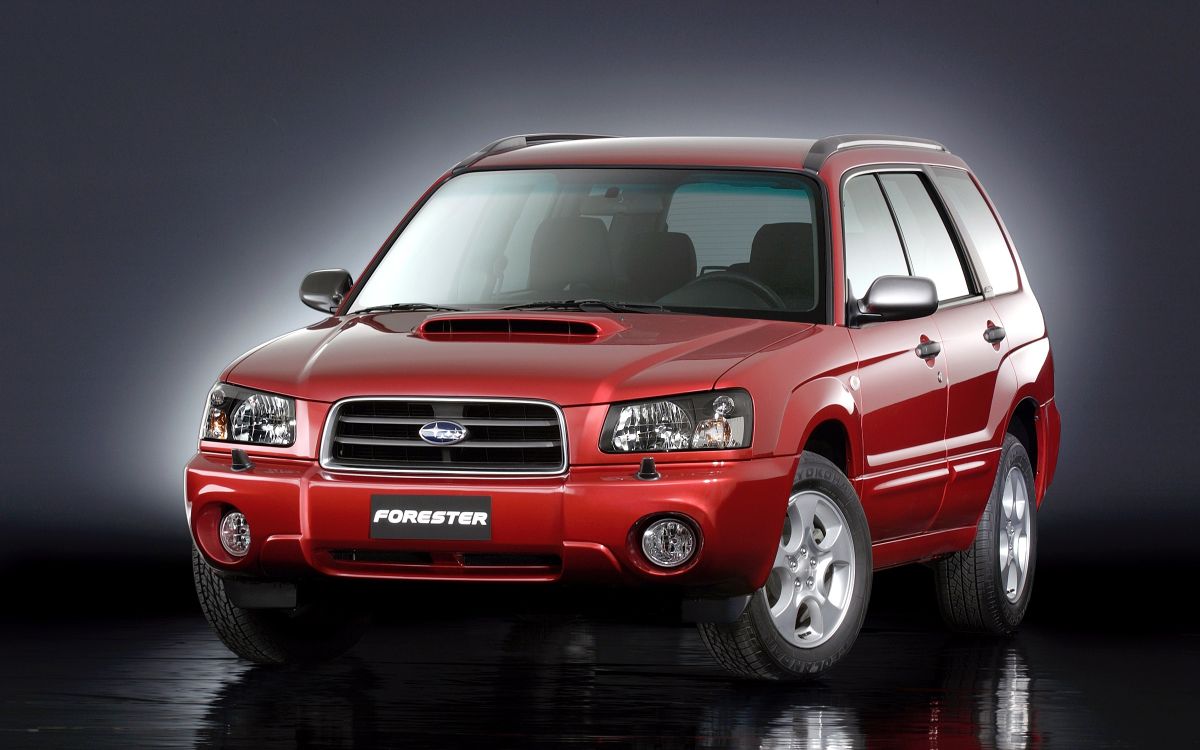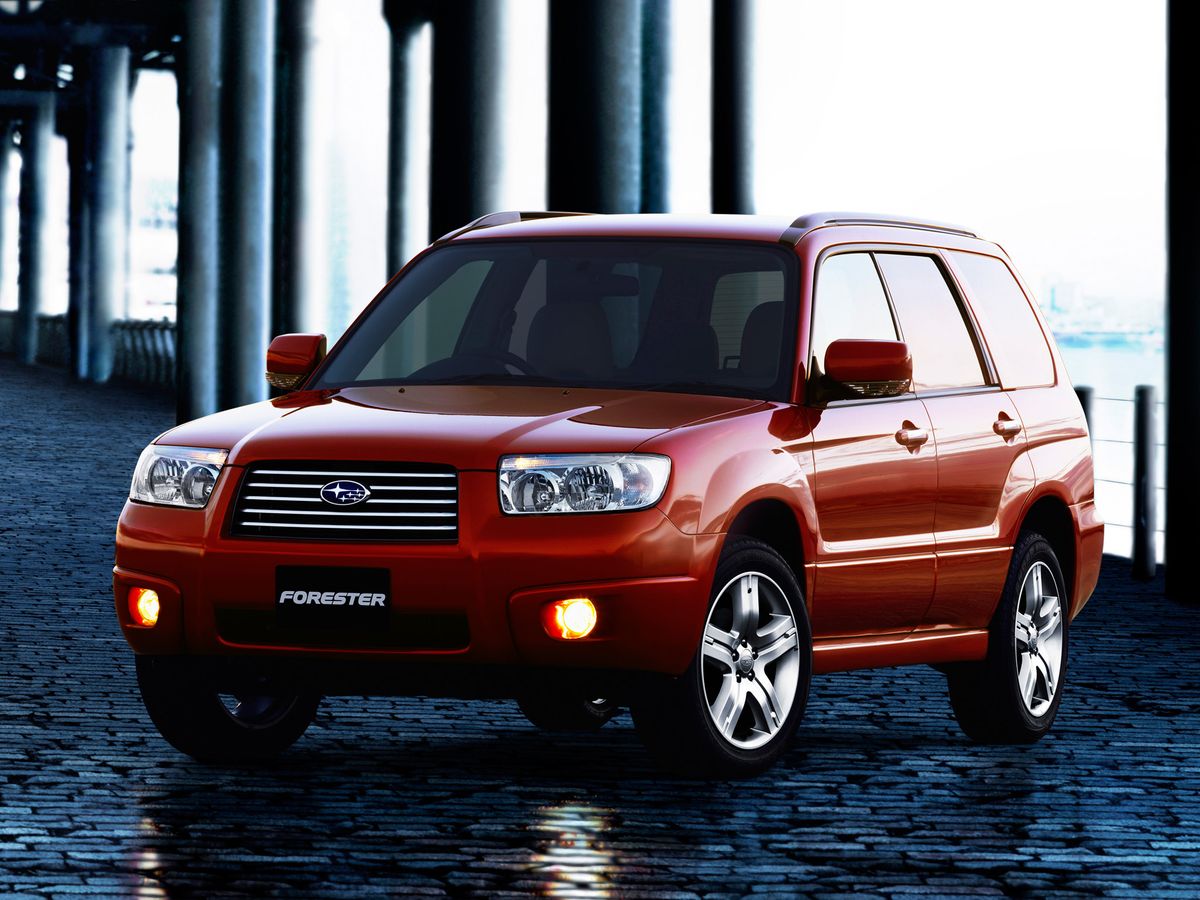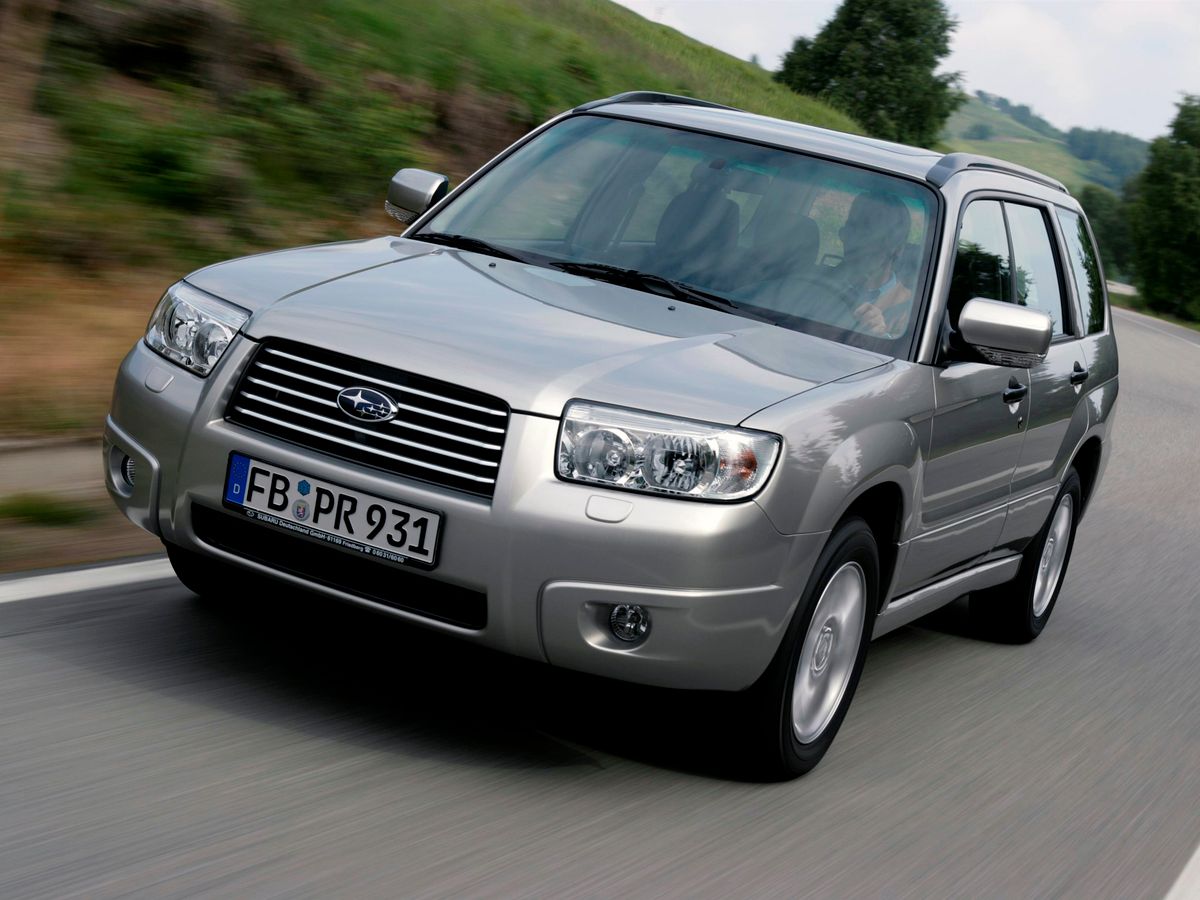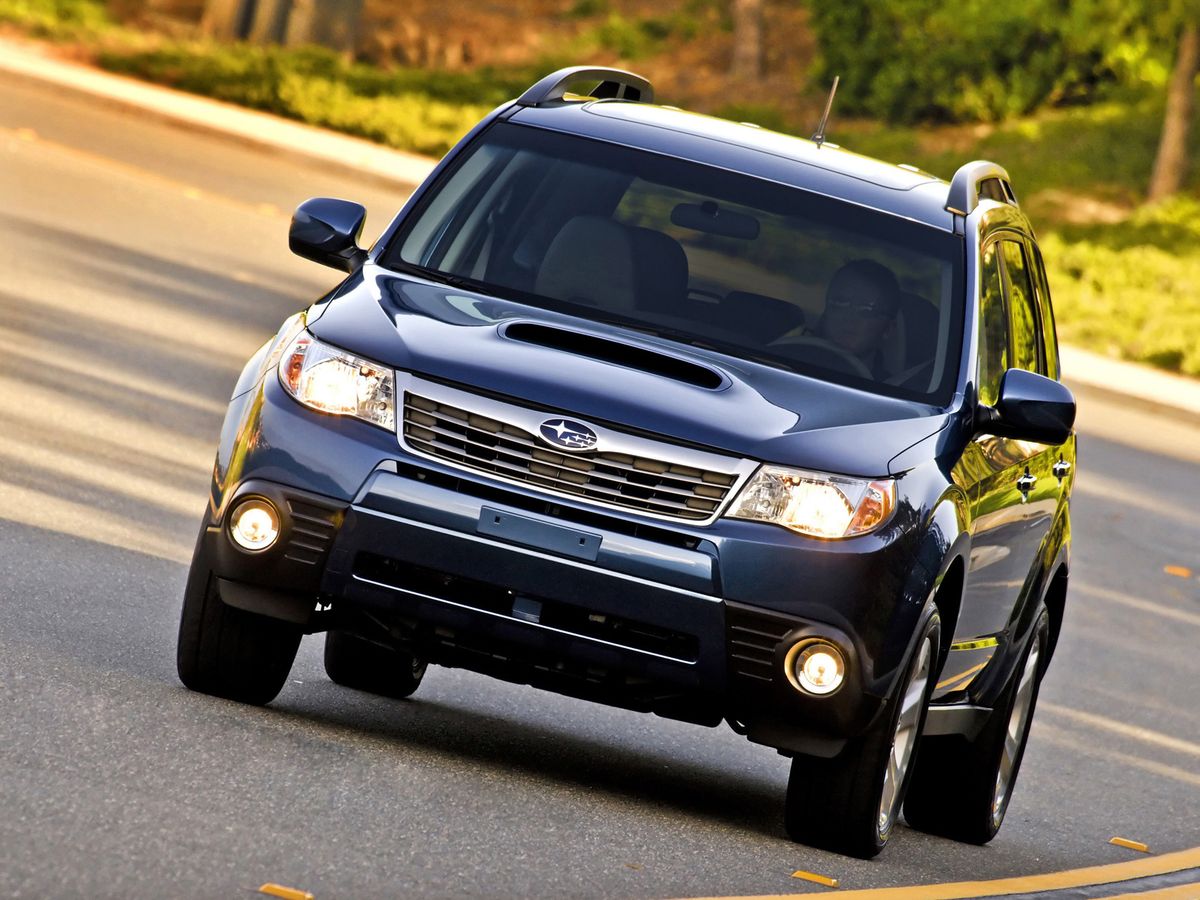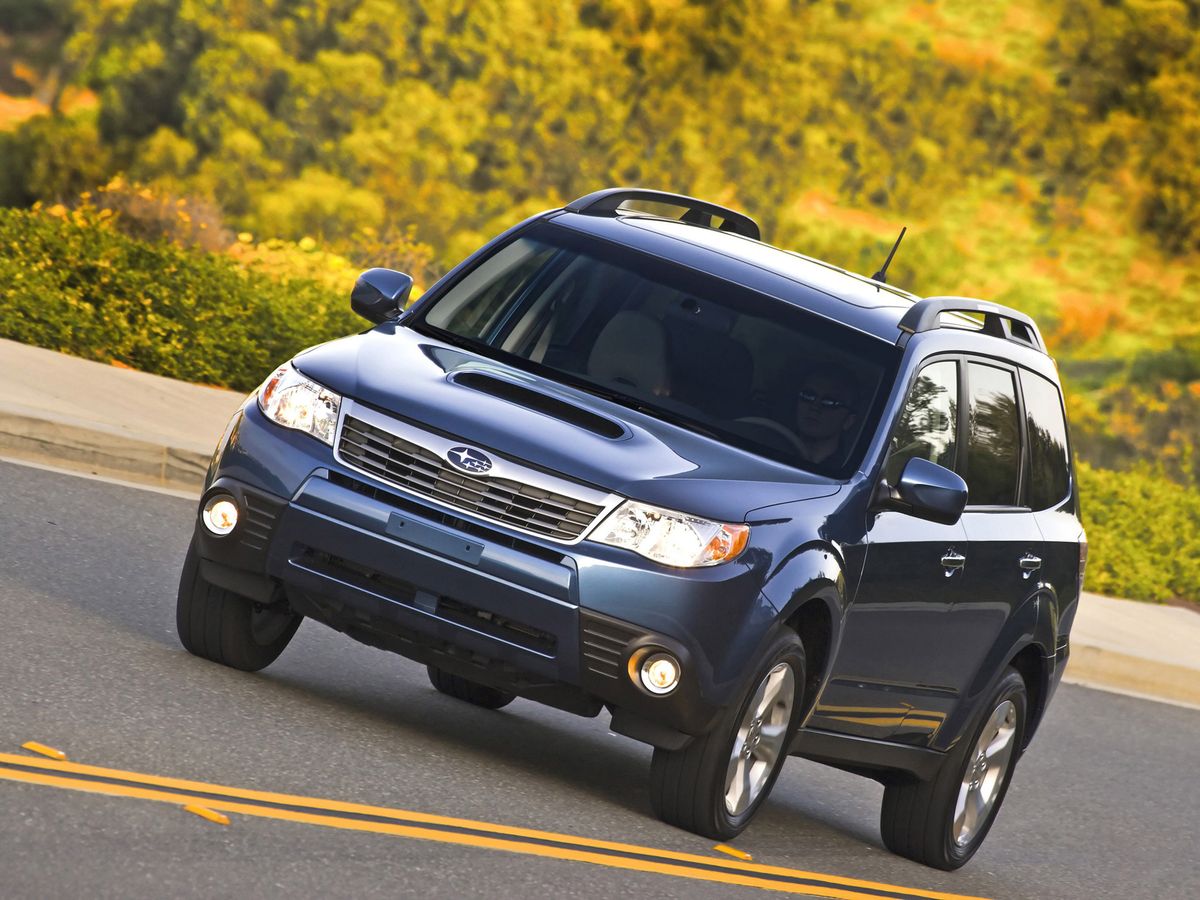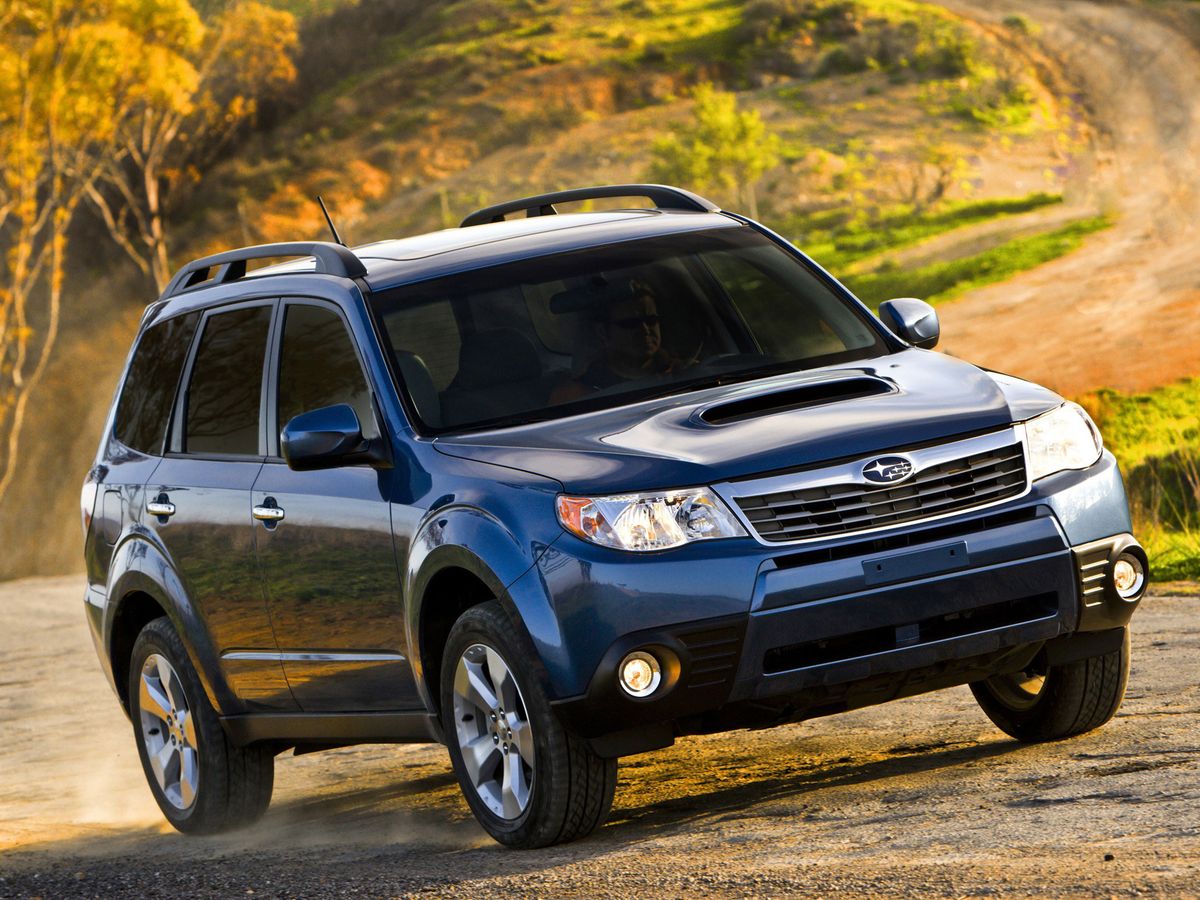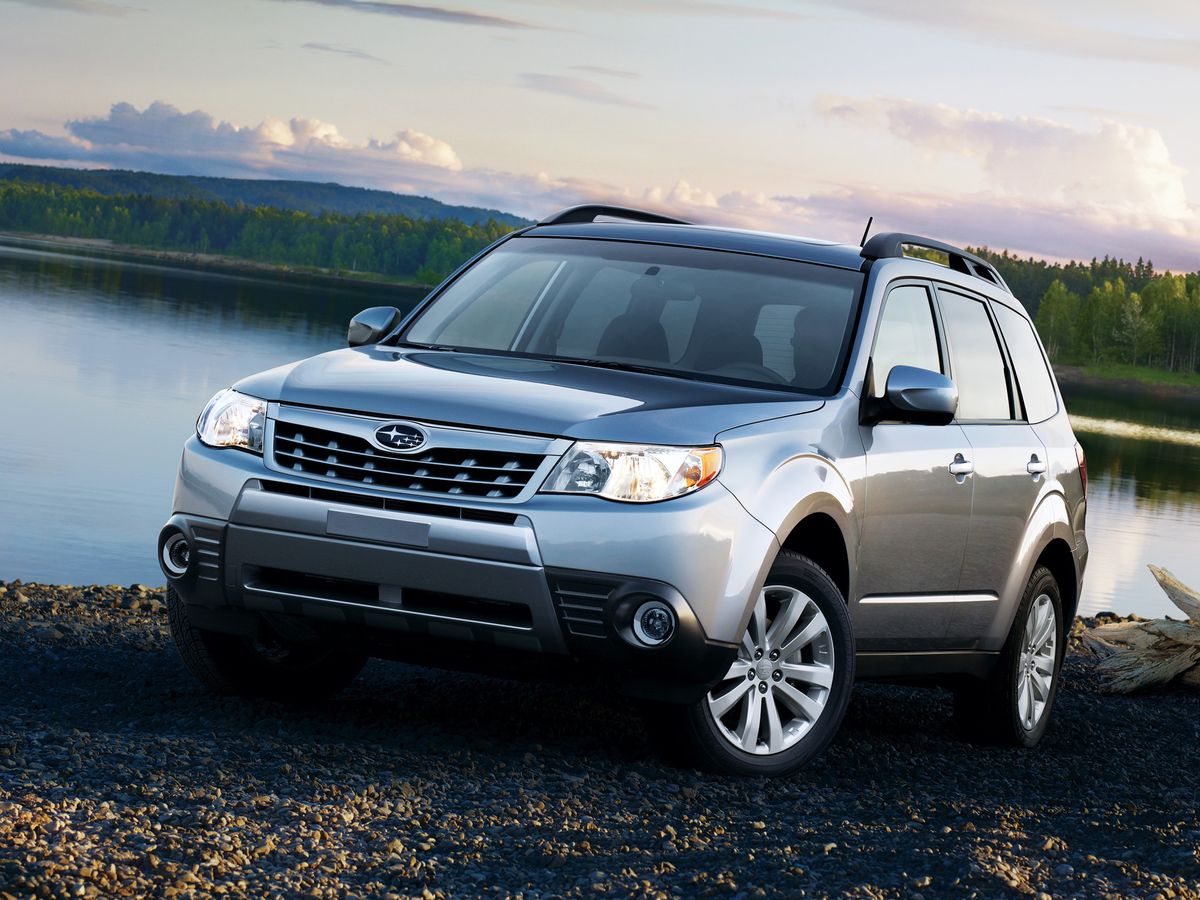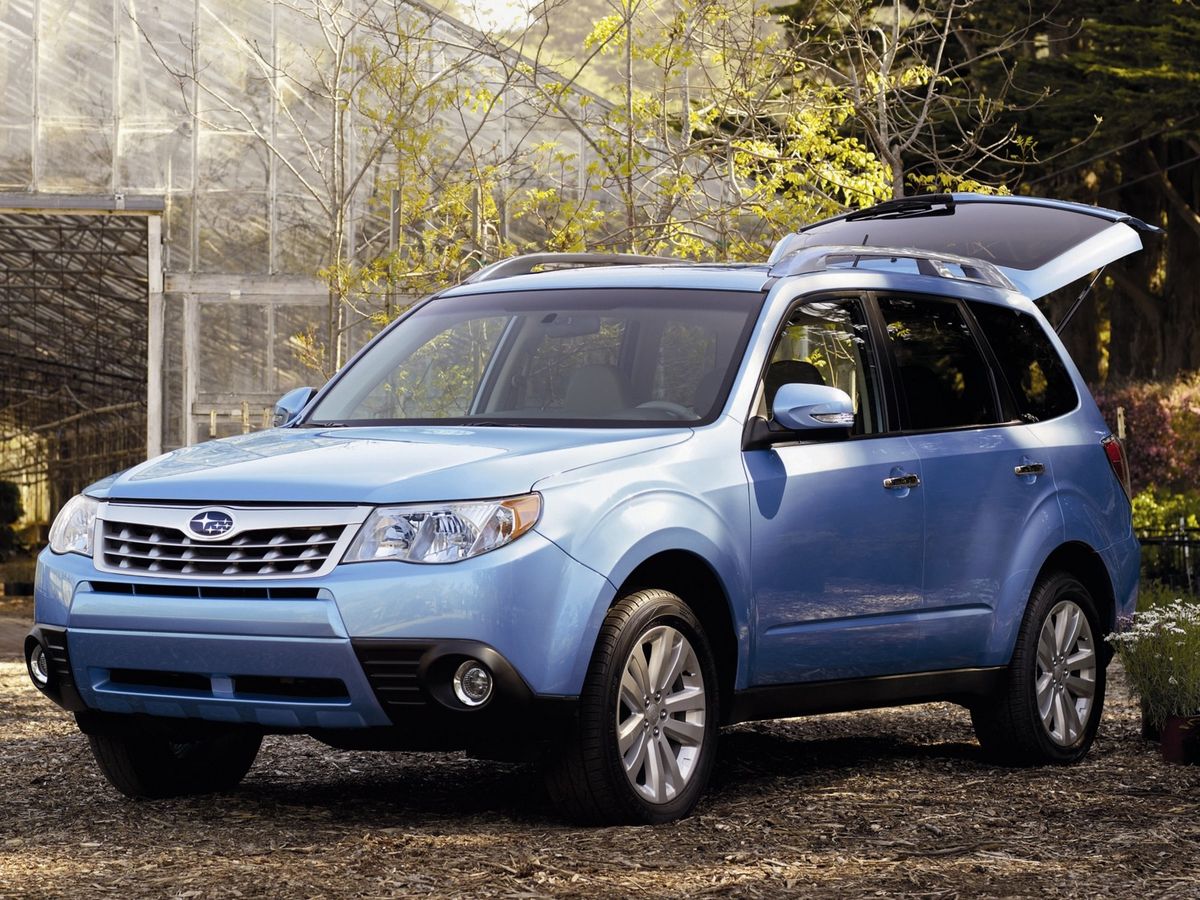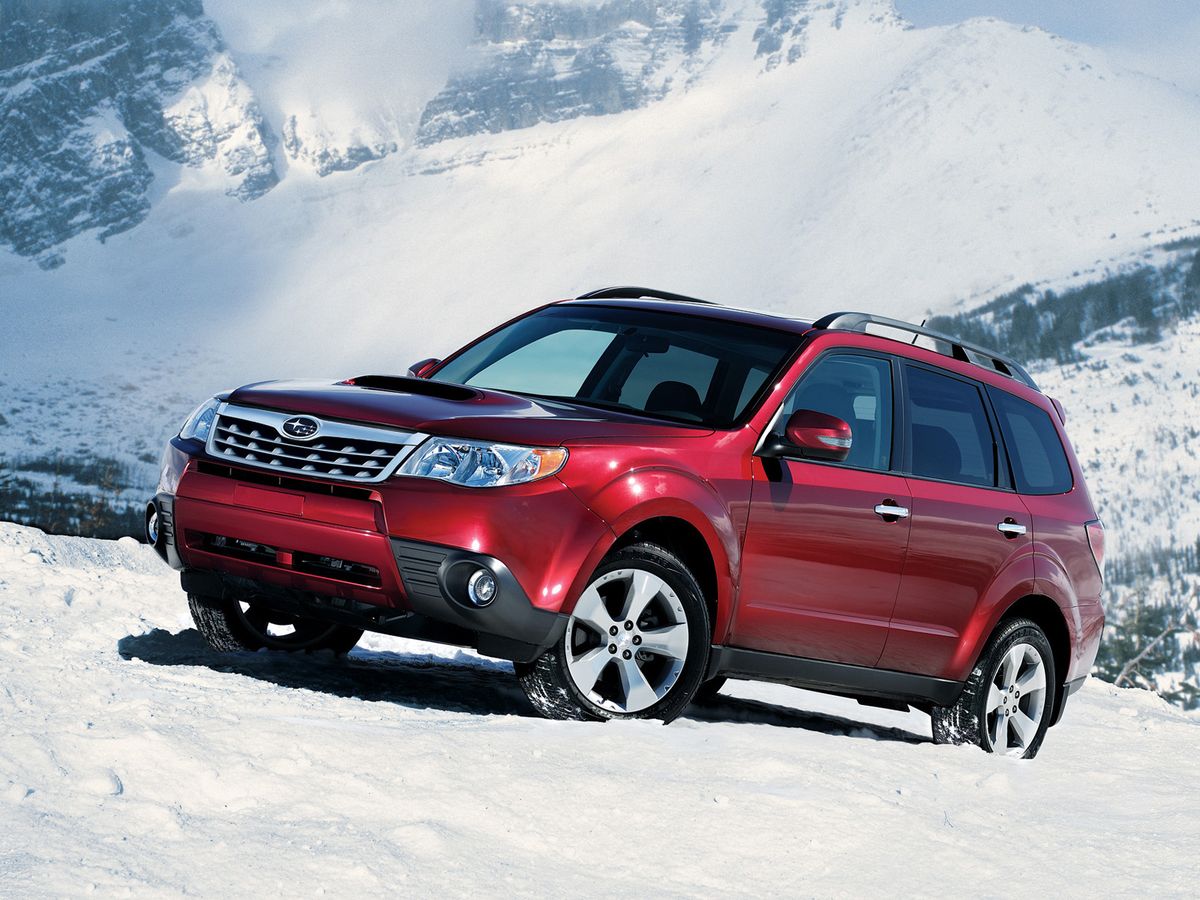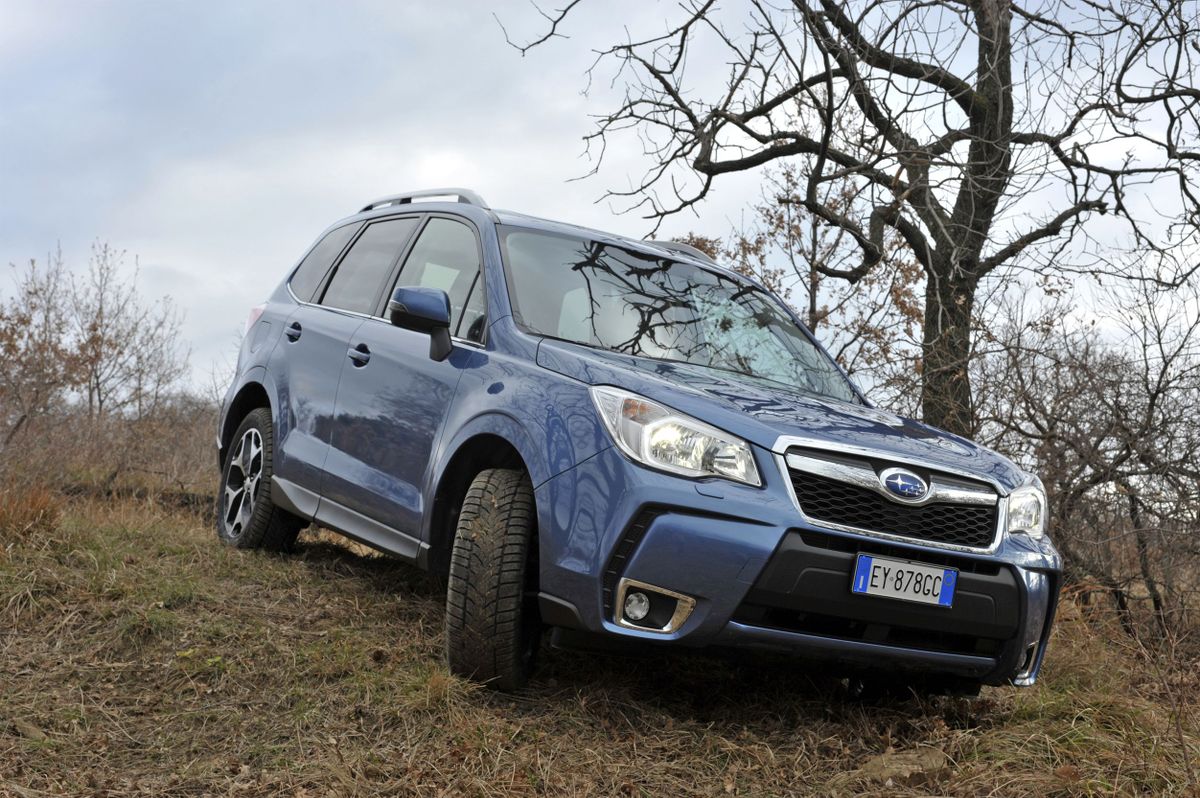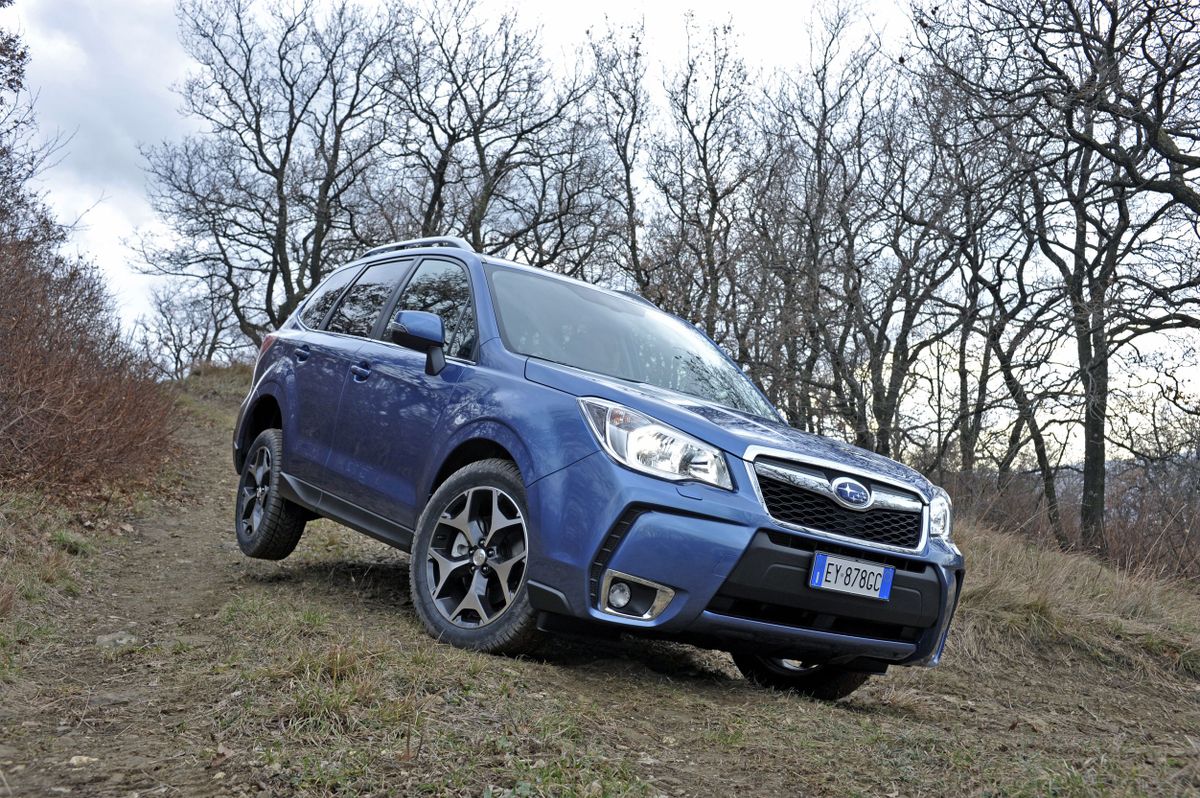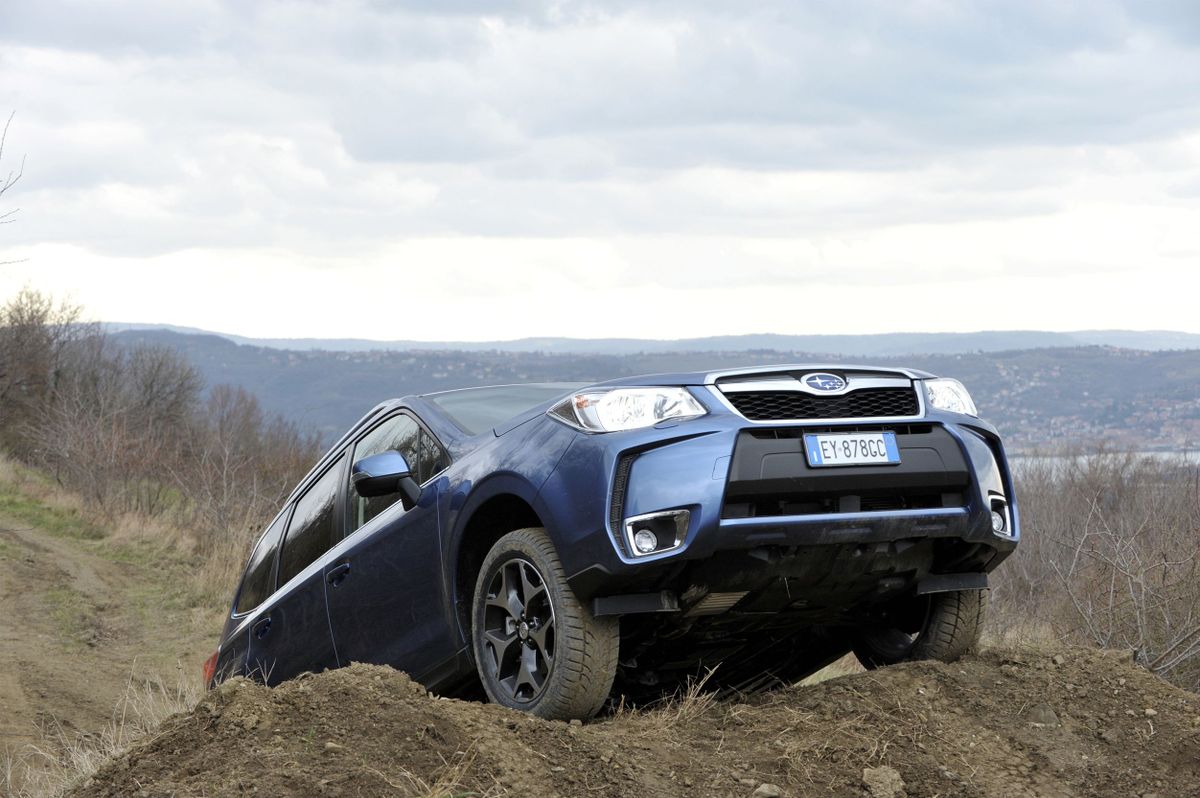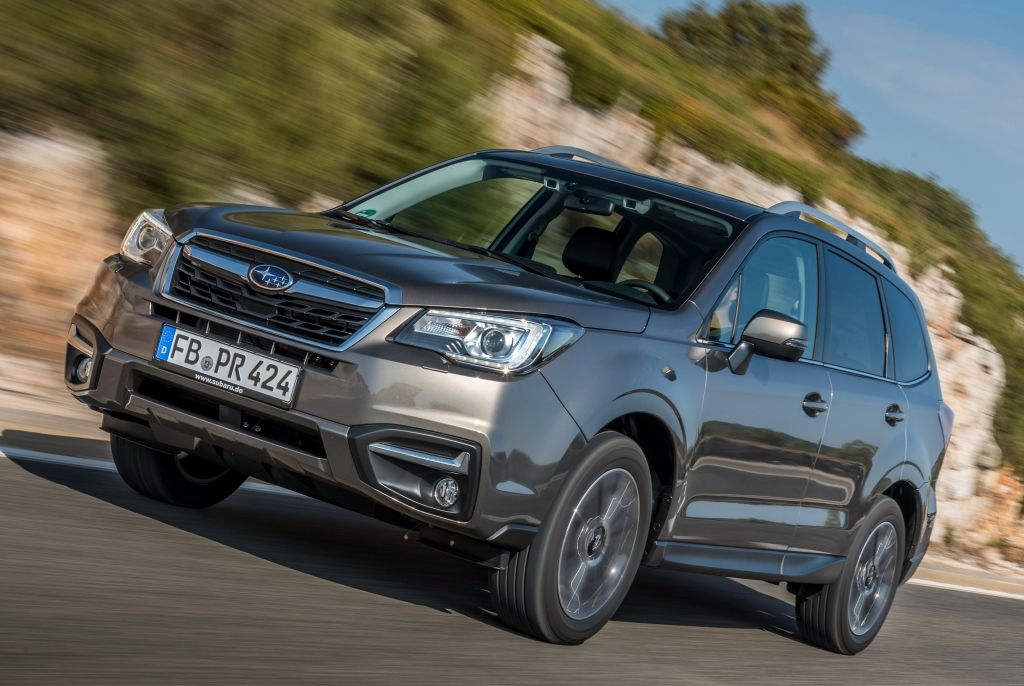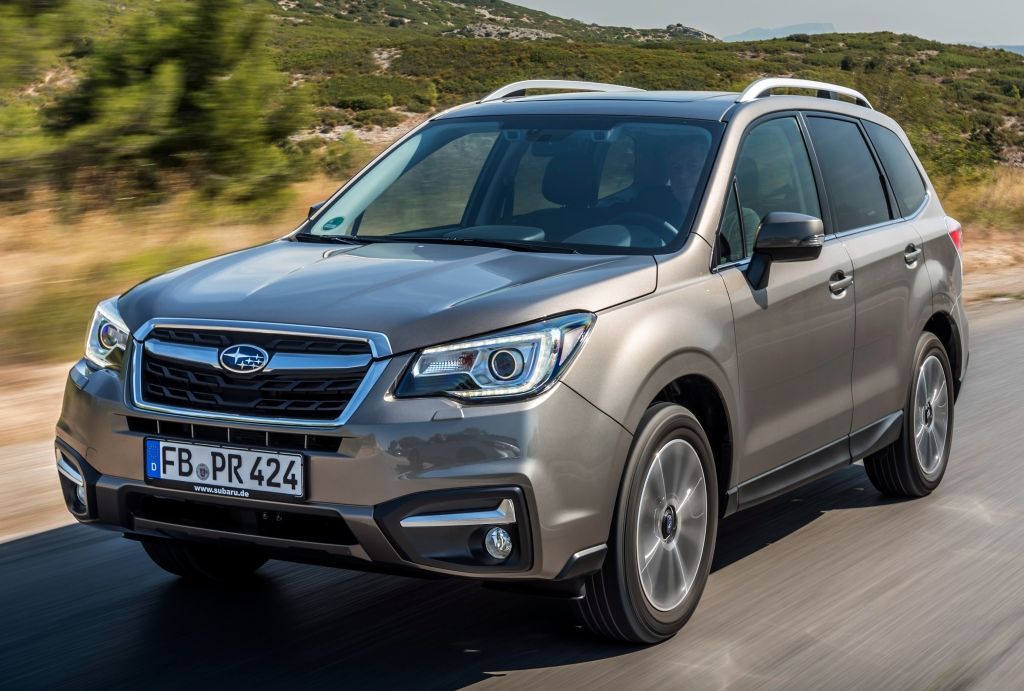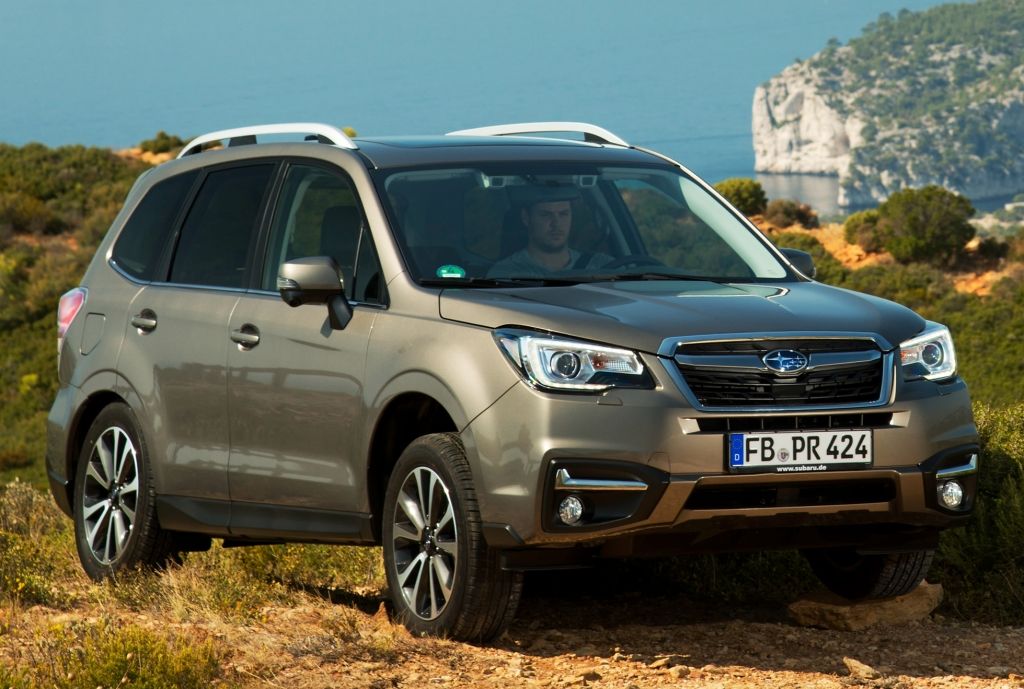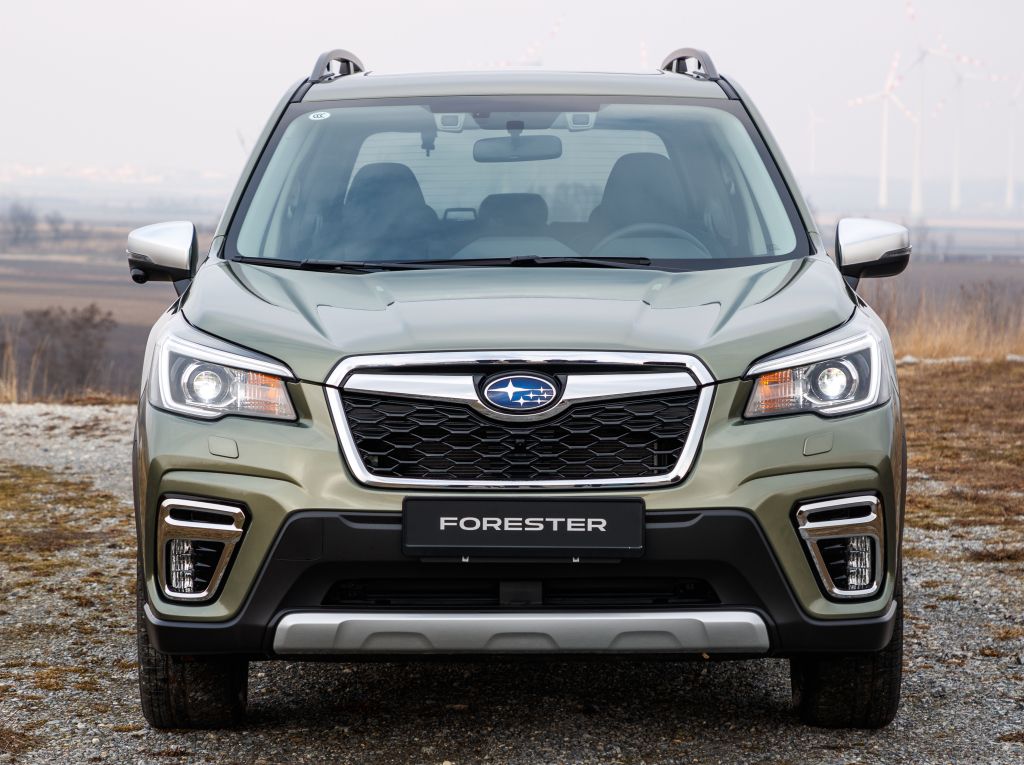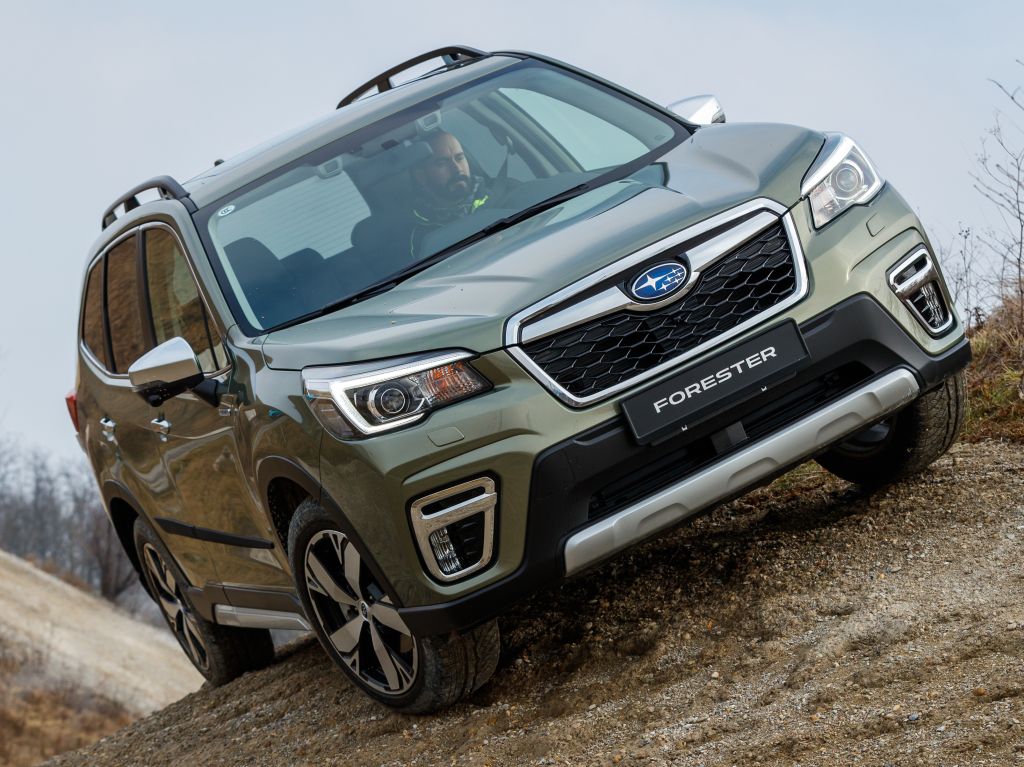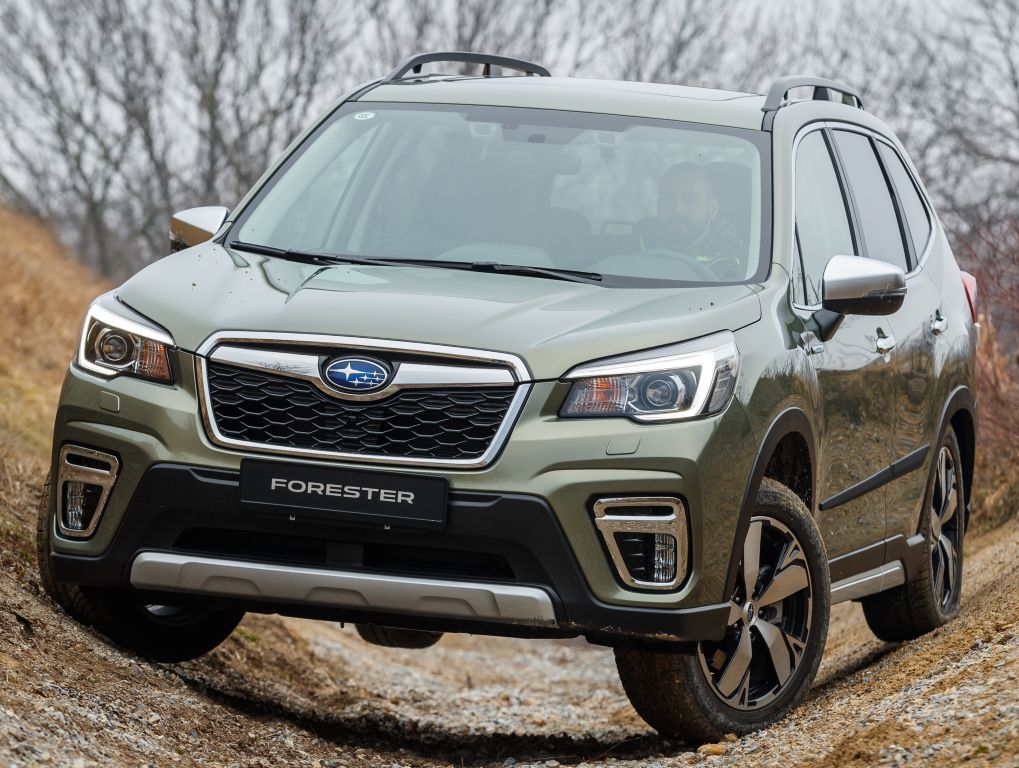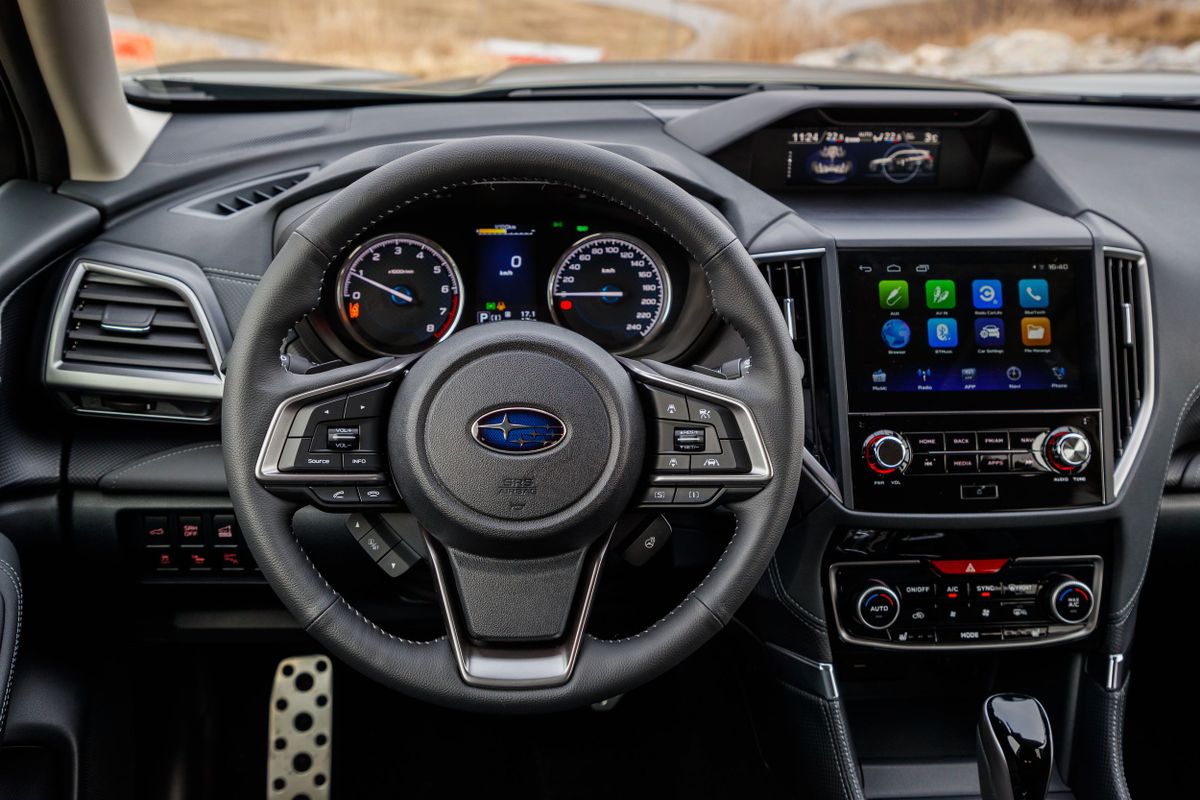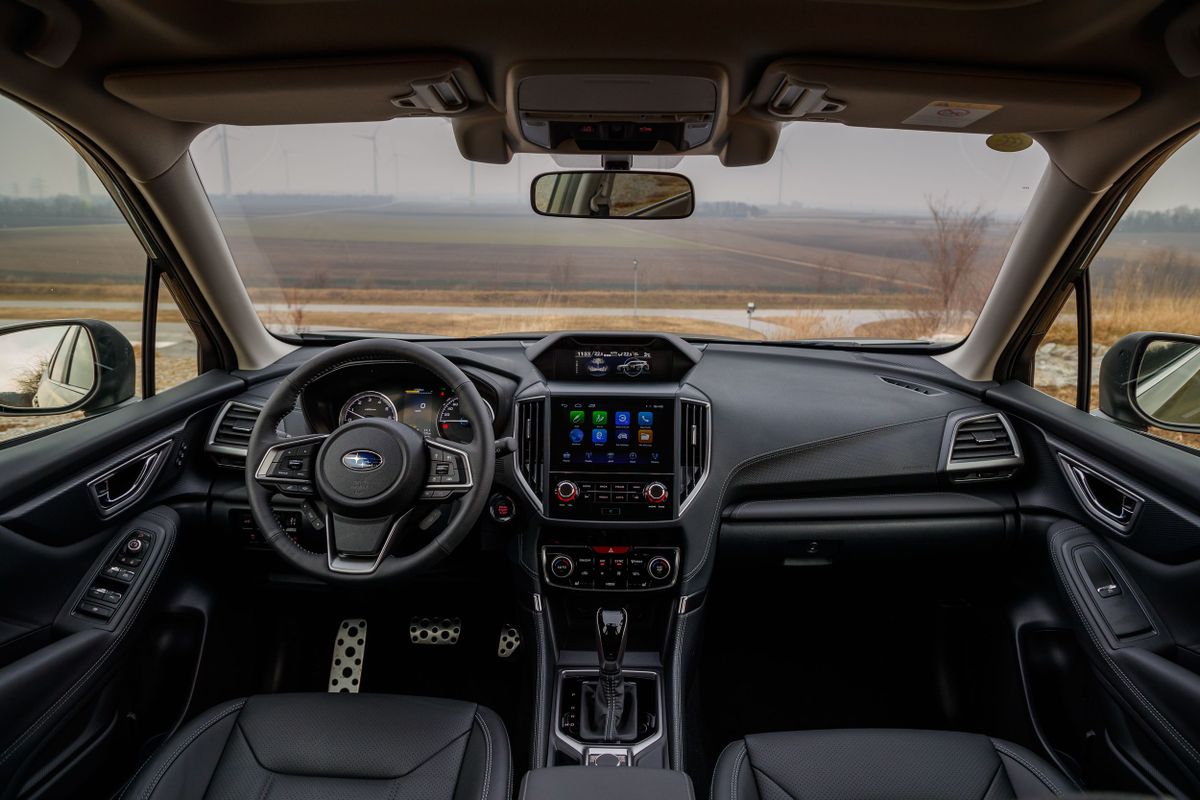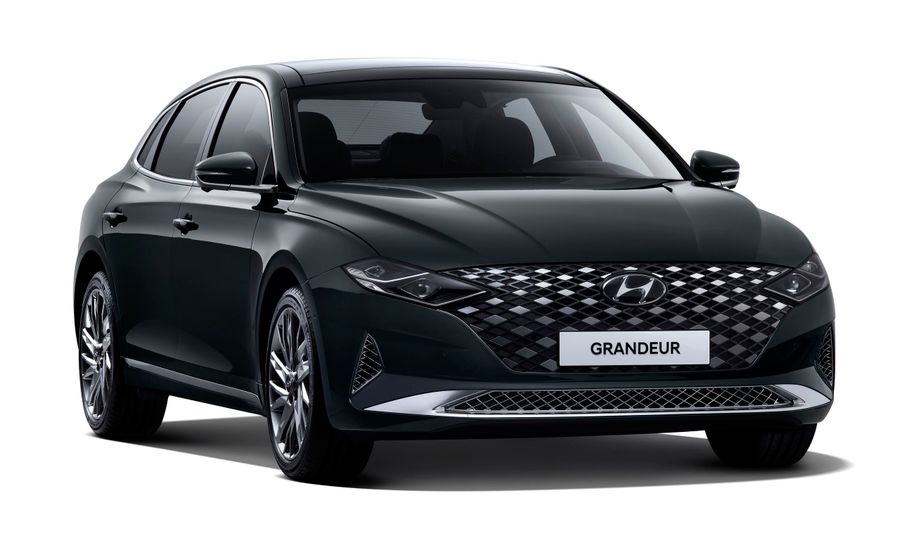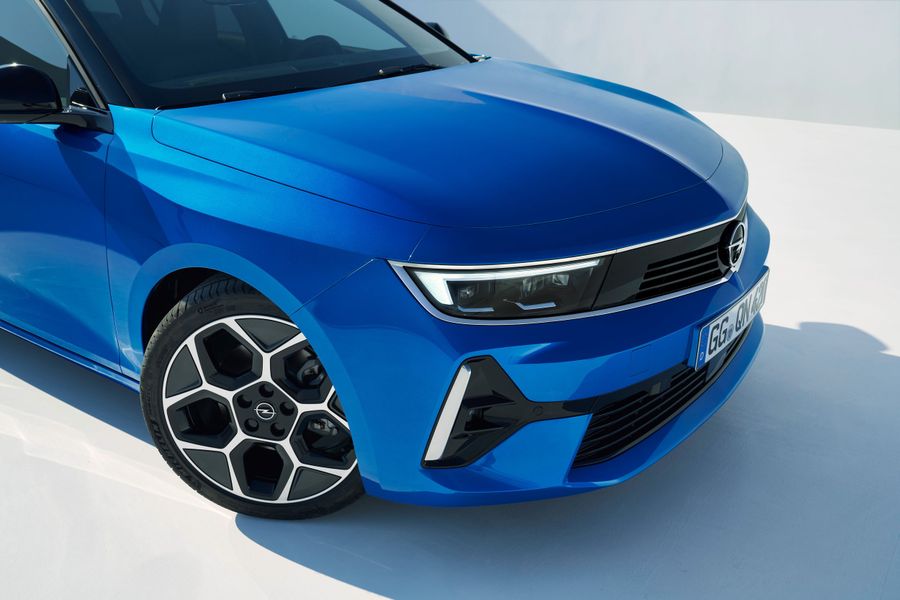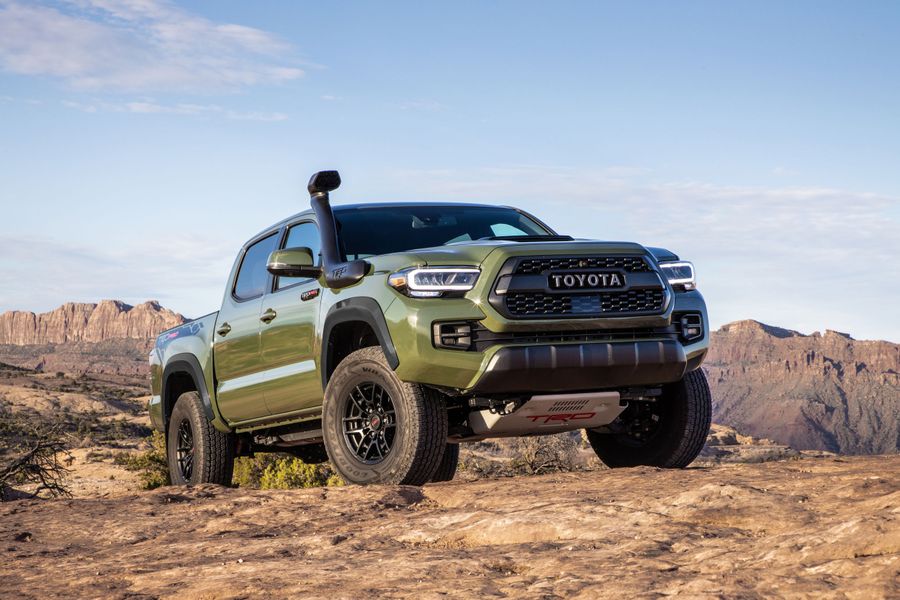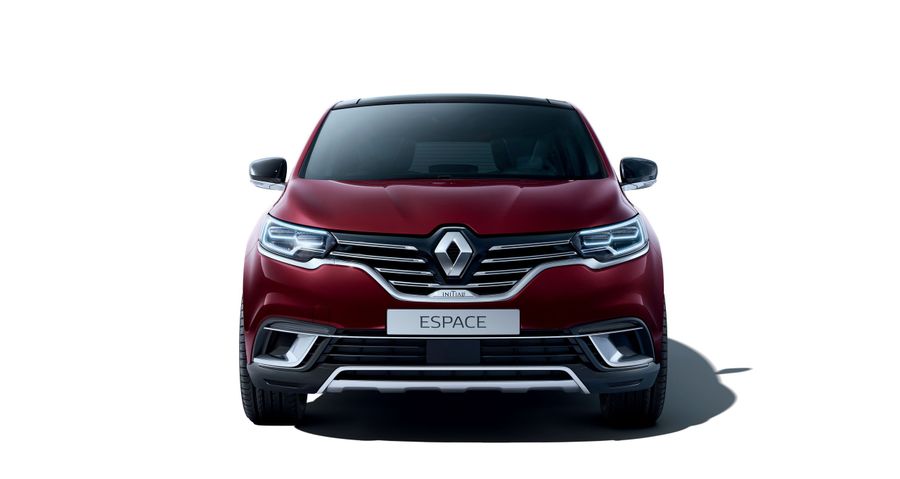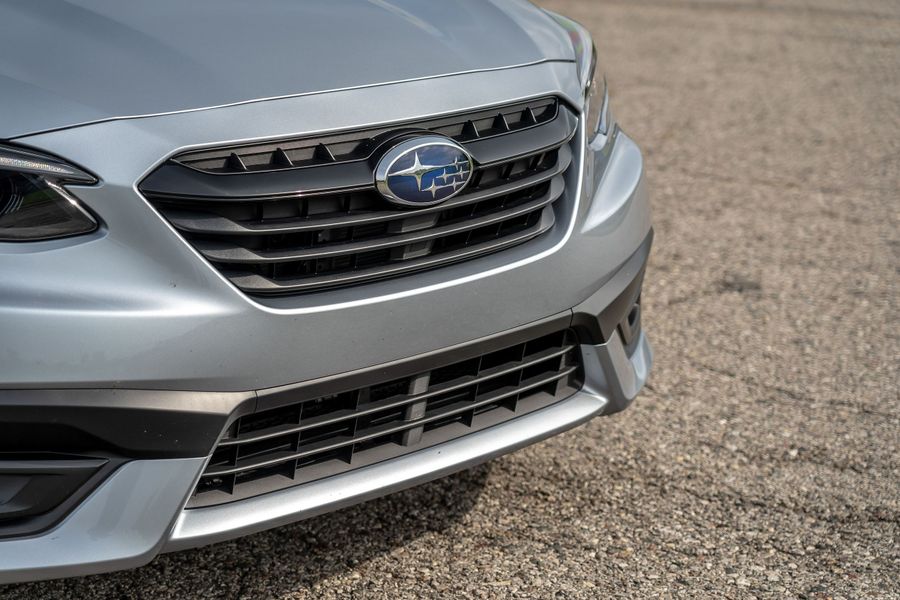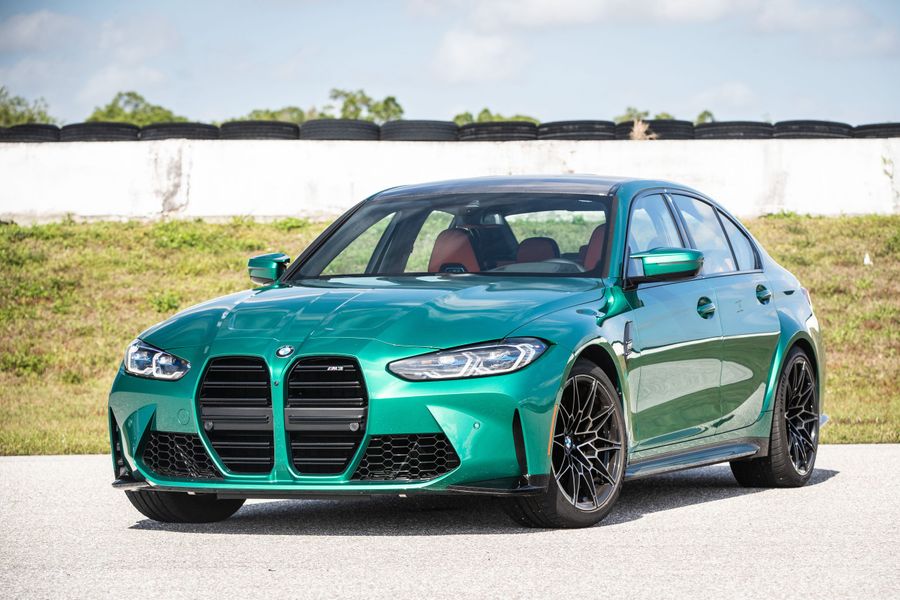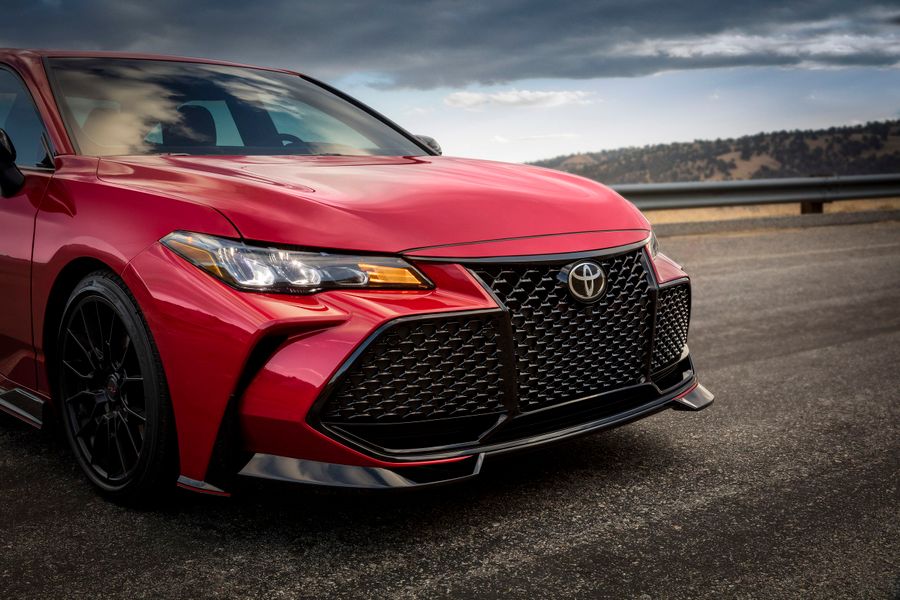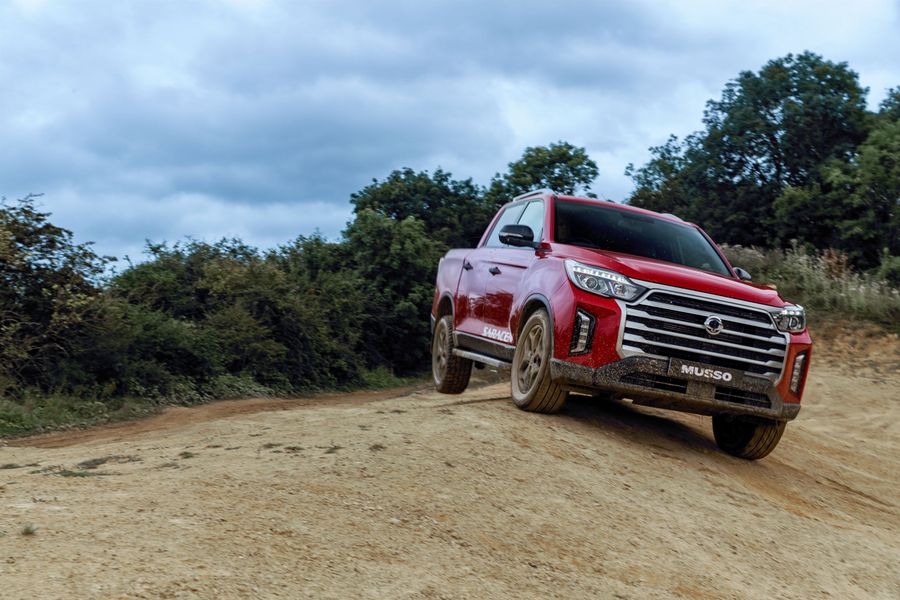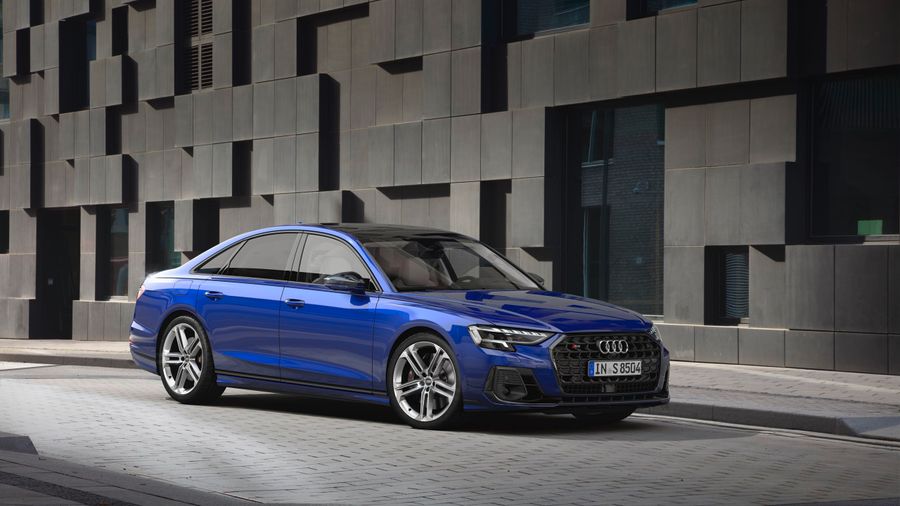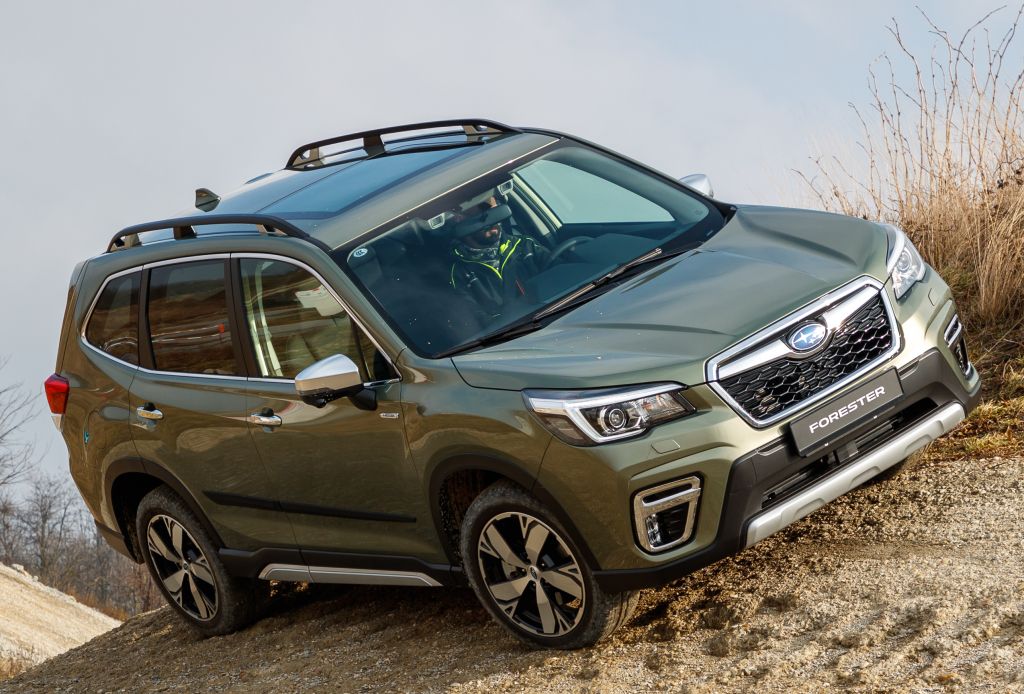
True to itself and traditions
In the summer of 2021, the manufacturer presented a restyled Subaru Forester in Japan.
The Subaru Forester is a five-seater, all-wheel drive SUV produced by Subaru since 1997. Loyalty to tradition and unique technologies are essential for Subaru. Not every model can be successfully developed, becoming better with each new generation, but the Forester’s story shows that successful cars can be found. In 2021, Israeli buyers can purchase the fifth generation of the SUV.
The first generation
It was produced from 1997 to 2002, while its restyling took place in 2000. The Subaru Forester debuted back in November 1995 in Tokyo. During the 1997 Detroit Auto Show, Subaru presented a vehicle with high ground clearance and four-wheel drive, which looked more like an estate raised above the road than an SUV. It was the fusion of the best qualities of a SUV and a compact estate that made the Forester successful.
The first Subaru Forester was a crossover SUV due to its high seating position, large fog lights, ‘off-road’ style bumpers and plastic protection on the lower part of the body. The passenger compartment also differed from the conventional passenger estates. The Forester’s trunk compartment had a pretty decent volume of 410 liters, which could be increased to 1,530 liters with the rear seats folded down. The first generation vehicle was 4,450 mm long, 1,735 mm wide and 1,600 mm high. The wheelbase was 2,525 mm.
The Subaru 2.0 liter EJ20 served as the basic engine (122 or 125 hp). There was a choice between a 5-speed manual transmission and a 4-speed automatic transmission. The turbocharged version with a 2-liter engine was already producing 170 hp (its maximum speed reached 189 km/h, acceleration to 100 km/h occurred in 8.4 s). The naturally-aspirated engine consumed 9.2-9.4 l/100 km, while the turbocharged engine consumed 9.9-10.5 l/100 km.
The Subaru Forester had the features peculiar to off-road vehicles: a roomy trunk, the high driving seating position, increased ground clearance.
The vehicle was equipped with the MacPherson strut at the front and a double wishbone suspension at the rear. Models with 2.0 liter naturally aspirated engines and manual transmissions had a FullTime D/R permanent all-wheel drive with a center differential and a speed-reducing gear, while those with an automatic transmission had an Active Torque Split AWD system. In a normal state, the distribution of torques between the front and rear wheels was 90:10, but when slipping the ratio was 50/50. Efficient, comfortable, economical and dynamic, the Forester was highly reliable.
The first Forester was equipped with two airbags, door stiffeners, ABS. European trim levels looked a little more humble than Japanese ones (electric mirrors, power windows, central locking, rear wiper, air conditioning).
In 2000, the Forester underwent restyling, acquiring new headlights and a hood with headlight cutouts, new fog lights and a new radiator grille, as well as double taillights, partly located on the rear fenders and on the tailgate. The restyled Forester could boat of better interior decoration, advanced heating and air conditioning systems.
The second generation
It was produced from 2002 to 2008, while its restyling took place in 2005. The second generation Forester was distinguished by an eye-catching and expressive design due to a new shape of the front bumper, the new radiator grille and optics. The passenger compartment provided more legroom for the second row passengers. The vehicle became lighter.
The Foresters were equipped with 2 liter engines (turbocharged or not) producing from 137 to 220 hp, while the STi version was equipped with a 2.5-liter engine (265 hp) coupled with a 6-speed gearbox (acceleration to 100 km occurred in 5.9 s). After the restyling, the engines no longer demonstrated a tendency to overheat, which was typical in the previous generation models.
The Subaru Forester repeatedly occupied the highest places in reliability ratings and won various awards as the best-selling car, as the ‘ideal car of the year’, etc. This is a great option for those who do not need a large vehicle, but instead want to find reliability, cross-country ability, dynamics and comfort.
The second generation vehicles retained the permanent four-wheel drive and high ground clearance. The 4-speed automatic transmission versions acquired a 4WD Torque Split all-wheel drive system, while the models with a 5-speed manual transmission had a center differential with a viscous clutch. If necessary, the Subaru Forester could confidently move through mud, a field or a river bank. The suspension was still reliable and damage resistant.
The second generation Subaru Forester earned a high rating in a series of offset frontal tests. The vehicles repeatedly occupied the highest places in reliability ratings and won various awards as the best-selling car, as the ‘ideal car of the year’, etc. The Forester was distinguished by reliability, cross-country ability, dynamics and comfort. After the 2005 restyling, the SUV acquired new optics, central panel and dashboard, turn signals in mirrors, and 17-inch wheels, while the VDC system became a basic option.
The third generation
It was produced from 2007 to 2013 (restyled in 2010) under the motto ‘The best combination for an active lifestyle.’ As a result, the wheelbase grew by almost 90 mm, at the same time the vehicle became 76 mm longer, 46 mm wider and 110 mm higher. The ideas behind the previous two generations evolved. The third generation models were still equipped with 2.0 and 2.5 liter engines. The most powerful versions were the S-edition and the TS with a 2.5-liter turbocharged engine (263 hp). The automatic transmission was represented by a 4- or 5-speed Sportshift, with manual mode. As for the manual transmission, there was a Dual-Range transmission (with lower gear).
The Subaru Forester was one of the best in the class in terms of passive safety.
Moreover, the manufacturer started installing softer springs and shock absorbers for better traveling comfort. The VDC system protected the car from skidding. The all-wheel drive was permanent, while the vehicles equipped with a manual transmission differed from those with an automatic transmission, and, thanks to a low range, had, perhaps, the best cross-country ability in the class. In this case, the developers fully complied with their motto. The new vehicle acquired a new structure of the power frame, which made the body stronger and more efficiently absorbed the impact energy in the event of an accident.
The 2010 restyling was important, as the range of engines was upgraded. The most massive and reliable two-liter petrol boxer engine (150 hp) became more high-torque in the mid-range zone and more fuel-efficient by 10%. The SUVs with manual transmissions were still equipped with all-wheel drive with viscous coupling as a central locking mechanism, and vehicles with automatic transmissions were equipped with an electro-hydraulic multi-plate clutch that distributed torque between the front and rear wheels. The interior and suspension were also upgraded.
The fourth generation
It was produced from 2012 to 2018 (restyling took place in 2016 and 2017). The forth generation vehicle became noticeably larger. The Forester now belonged to a D-class. It was 4,595 mm long, 1,780 mm wide and 1,732 mm high. Its wheelbase was 2,640 mm. A Forester was a great option for those who needed a high ground clearance, a permanent all-wheel drive, a comfortable volumetric interior. And a new size turned out to be a good thing.
The fourth Forester was equipped with three engines: FB series naturally aspirated engines with a volume of 2.0 liters (150 hp) and 2.5 liters (172 hp) and a turbocharged engine with a volume of 2.0 liters (241 hp). The latter, coupled with a CVT, allowed the car to accelerate to 100 km in 7.5 seconds, and the maximum speed was 221 km/h. At the same time, the consumption in the city was 11.2 liters per 100 km.
The Foresters now featured a CVT. But even here, Subaru distinguished itself by using a more durable chain than the standard belt from other companies. Another novelty was the X-MODE system, which helped the driver to drive in off-road conditions. It adjusted the operation of the engine and transmission.
The CVT used on the new Forester was called Lineartronic, and the X-MODE system was used together with it. Its worked is as follows: when a vehicle drove on an uneven or slippery road, it perceived and at the same time adjusted the parameters of the engine, transmission, all-wheel drive and the dynamic stabilization system, making it easier to overcome obstacles, preventing it from skidding, helping when descending a hill, etc. The CVT with a reliable wedge-chain transmission had different modes of operation, including imitation of fixed gears, and there were 8 gears. The versions equipped with a manual transmission refused from an auxiliary gearbox.
The basic equipment included aluminum rims, xenon headlights, fog lights, side mirrors with repeaters, electric front seats and tailgate, leather upholstery, color display. There were three new colors (blue, red pearl and gray-green metallic).
In March 2016, the vehicle underwent a restyling. The driver’s seat had a memory function, while all the seats and the steering wheel were heated. The steering wheel was borrowed from the Outback and was very eye-catching, as was the large-screen infotainment system. New options included a keyless entry system and LED headlights. Plus, a number of technological improvements were made to the engines, which did not affect their characteristics. The shock absorber settings were optimized, and new steering characteristics were added.
The fifth generation
It has been produced from 2018 to the present (as of 2021). The wheelbase has grown (up to 2,670 mm), and the body has become longer (4,625 mm) and wider (1,815 mm). The trunk has a volume of 530 liters. The shape of the door openings has been optimized, so it is much more convenient to get in and out of the car even in tight parking lots. The interior consists of high quality materials. The expensive versions have a center console with an eight-inch screen, while the analogue instruments are complemented by a multi-information display. The new platform has made it possible to make the interior wider and increase the distance between the rows of seats.
The main engine is the upgraded FB25 (2.5 l, 184 hp, 239 Nm). Japanese buyers can purchase a hybrid modification: the FB20 unit with the AVCS 2.0 system (145 hp and 188 Nm) plus an electric motor (14 hp and 65 Nm). Both versions are equipped with a Lineartronic CVT. The fuel consumption for the regular model is 6.8 l/100 km, while the hybrid version consumes 5.4 l/100 km.
The suspension retains the familiar structure: the front MacPherson strut and the rear double wishbone suspension. Due to its modifications, the body rolls in corners have been reduced, plus the steering response has become better. Under off-road conditions, the Forester is assisted by the X-Mode system. It has two modes: Snow/Dirt and Deep Snow/Mud for more difficult conditions.
The vehicle has acquired an upgraded EyeSight system (includes an automatic emergency braking system, adaptive cruise control, a side camera system, blind spot monitoring functions and lane keeping assist). The standard equipment includes seven airbags in the passenger compartment, a wide set of active motion control systems (ABS, ESP, hill start assist and hill descent assist), rain and light sensors. In Israel, the Subaru Forester is sold in four versions and is available in the following eight body colors: silver, white pearlescent, bronze, green, blue, crimson red, gray and black metallic.


